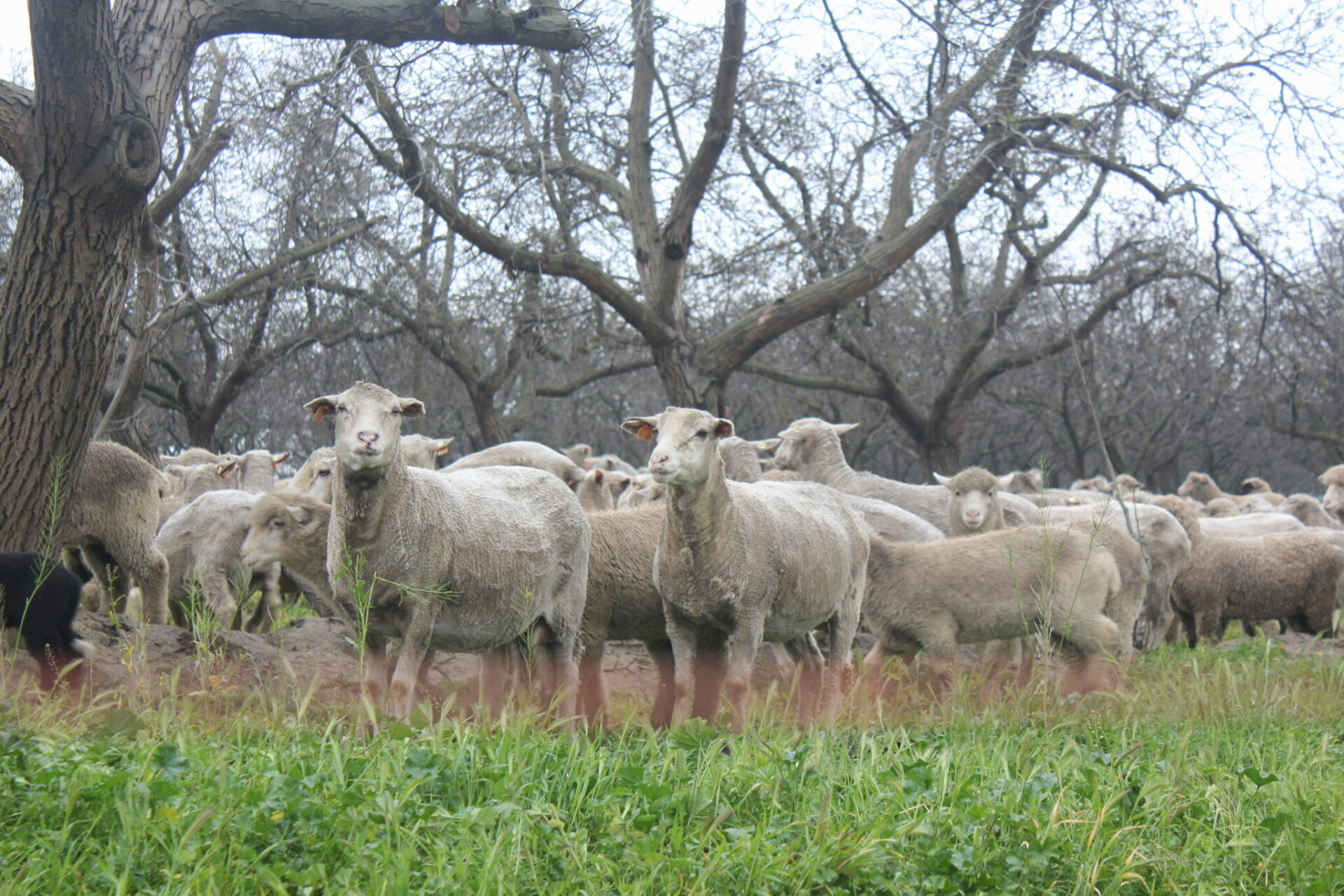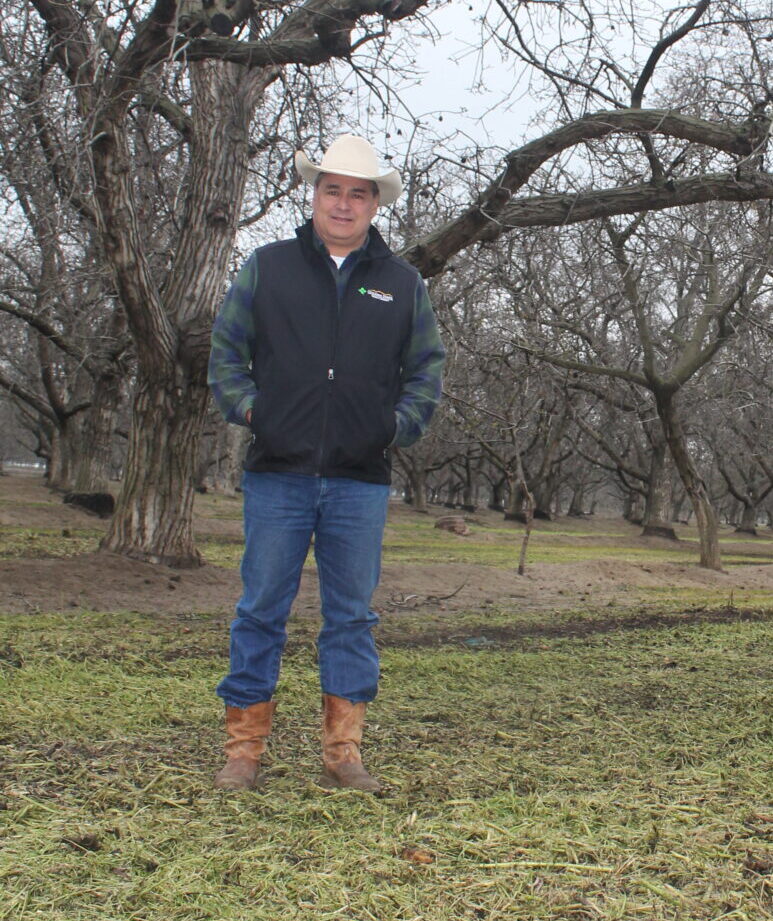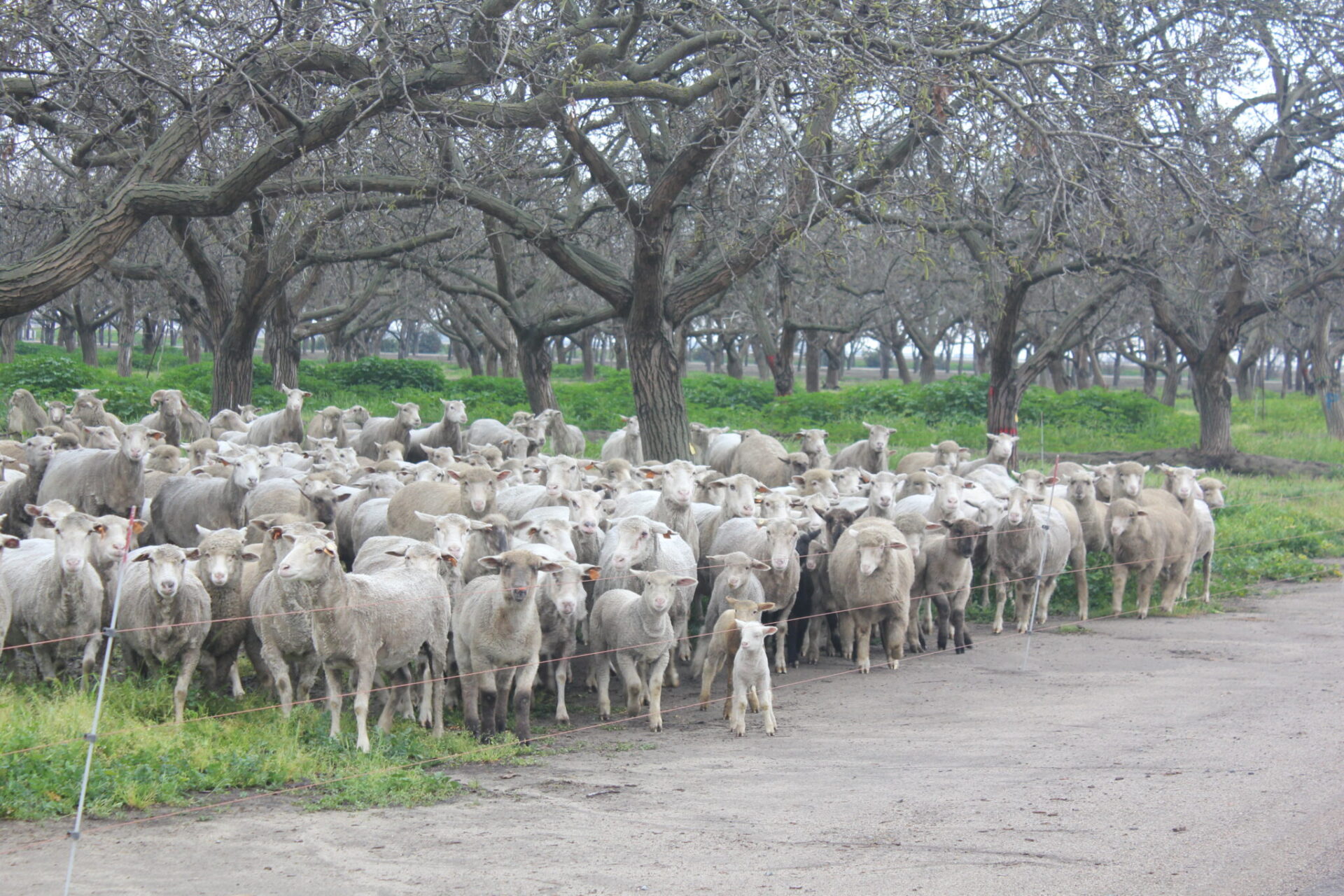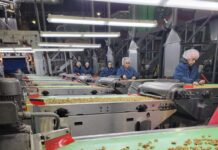
Sight of a lush green cover crop growing between rows of walnut trees was a draw for Visalia area sheep producer Cole Bakke. Not spending money on mowing and spraying was the goal of Jon Dolieslager, a walnut grower and operator of Tulare County Stockyard in Dinuba.
“We struck a deal that is a win-win for both of us. We eat his grass and Jon sells our sheep at his auction,” Bakke said in mid-March as he watched about 200 head of ewes and lambs graze a volunteer cover crop in the row middles.
This mutual agreement between a walnut grower and commercial sheep producer has a green light from a soil health perspective, but raises caution from the food safety standpoint. Krista Marshall, a researcher in the Gaudin Lab at UC Davis, said there are practical soil health benefits to grazing if it is managed well. Eric Heidman, vice president of grower services at walnut processor and marketer Diamond Foods, LLC, said the company does not encourage livestock grazing in their grower’s orchards due to food safety concerns.
In Dolieslager’s view, saving on mowing and weed abatement costs in the orchard when walnut prices are low is a benefit to him. The 60-acre orchard of mature Serr walnuts is transitioning to organic production and is flood-irrigated. The nearby huller that takes in organic walnuts is fine with the sheep grazing, he said.
Grazing walnut orchards is a new opportunity for Bakke. His bands of ewes normally graze dormant alfalfa fields or are fed crop residues. Both of those feed sources are becoming difficult to find, he said. The ewes and lambs in the orchard are well fed on the filaree and other native plants growing in the orchard middles in the winter months.
Dolieslager and Bakke have a plan for grazing the orchard middles. Portable electric fencing keeps the sheep in one smaller area rather than allowing them access to the entire orchard. This removes the vegetation quickly and the sheep are moved to another area. It adds to time and labor on Bakke’s end, but this type of targeted grazing is becoming more common for sheep producers. The practice is called ‘mob grazing’ and moves sheep to fresh feed and cuts down on soil compaction.
“The sheep are taking that plant matter and making nutrients. It is incorporated into the soil and available to the trees,” Bakke said.
Grazing Benefits
Ecological benefits to soil by using sheep to control winter weeds was the focus of a 2018 study at the UC Davis Gaudin Laboratory. The trial was conducted in a north coast vineyard and concluded that sheep integration increased soil microbial biomass and diversity in the top 15 centimeters of the soil and also enhanced the amount of soil fungi recycling plant residues into soil organic matter. The study also found that the added organic matter improved the soil water holding capacity.
But, there are caveats. Marshall said that it is important to understand how you are using the animals in the orchard. Goals are different depending on if the animals are brought in to manage the vegetation or terminate it. Integrating animals to manage vegetation can benefit soil health. Research has shown positive shifts in nutrient cycling, carbon sequestration and microbial communities, Marshall said. The advantages are similar in terminal grazing operations, but they have to be managed to prevent soil compaction.

There is increasing interest in incorporating livestock in managed crops, Marshall said, but it depends on the crop. Some, including nut crops that are shaken to the ground, are a challenge due to food safety issues.
The Food Safety Modernization Act rules state that animals must be out of the orchard or field 120 days prior to harvest. For organic production, the rule is 90 days. Heidman said that length of time does not take into account specific factors in each orchard. Manure may not break down evenly across the orchard. How an orchard is irrigated can make a difference in decomposition of the raw manure, he said.
“Dehydrators can turn you away due to manure in the load,” Heidman said.
Community Alliance with Family Farmers, a statewide agriculture policy advocacy non-profit, reports that typically sheep are brought into an orchard once cover crops are about 12 inches in height. Stocking density depends on cover crop conditions. In a dry winter, 200 sheep can be expected to clear one acre per day. Overgrazing is avoided by moving the flock once the cover crop is munched down to six inches. If rainfall is sufficient and soil conditions allow, the sheep are allowed to graze a larger area. Sheep are generally grazed until July 1, and the cover crop is terminated to prepare for harvest.
Grazing Is Not a New Practice
Jeremy Shepherd of Winters, Calif. grazes his sheep in walnut orchards. Growers must have hullers and processors who are comfortable with the practice, he said. Irrigation and management done properly can break down any manure left behind. Stocking rates and the amount of feed available have to be considered.
Grazing livestock on crop ground or in orchards is not a new practice, but it is new to the current generation of growers.
Shepherd said Sierra Orchards, an organic walnut orchard operated by Craig and Sean McNamara, have been flexible and open to grazing sheep in winter months.
“They were open to figuring out the process to make it work. Instead of just saying no, they were willing to try and make it work,” Shepherd said.
Finding a sheep producer who is willing to bring animals in for grazing could prove to be difficult. The situation has to have value for both the orchard owner and the shepherd. Moving the animals to the orchard, setting up portable electric fencing, providing water and moving the sheep frequently to avoid overgrazing are all costs to the shepherd. There is also the risk of losing animals to predators. The trade-off is free feed.
Food safety and soil compaction from the sheep are not concerns for Dolislager.
The sheep are only in his orchard for a few months, removed well before the required 90-day time period prior to harvest. The sheep are also moved frequently, and in the case of wet weather, are allowed to spread across a larger area to avoid compacting the soil. Plus, he has approval from the huller.
When the sheep are moved out at the end of March, Dolieslager said he plans to a compost application and start irrigation.
Conventional walnut growers may be a little leery of allowing sheep in their orchards due to a number of issues, Dolieslager said, but he believes they fit into his organic production. After his purchase of the walnut orchard a few years ago, he was approached by a neighbor who produces walnuts in an organic program and operates a huller for organic walnuts. Considering the higher premium offered for organically grown walnuts, Dolieslager began the transition. The older block of Serrs were not going to turn a profit otherwise, he said.
“We really have to farm these as reasonably as possible,” he said. “Mowing and weed abatement are added costs that we can’t always recoup.”











